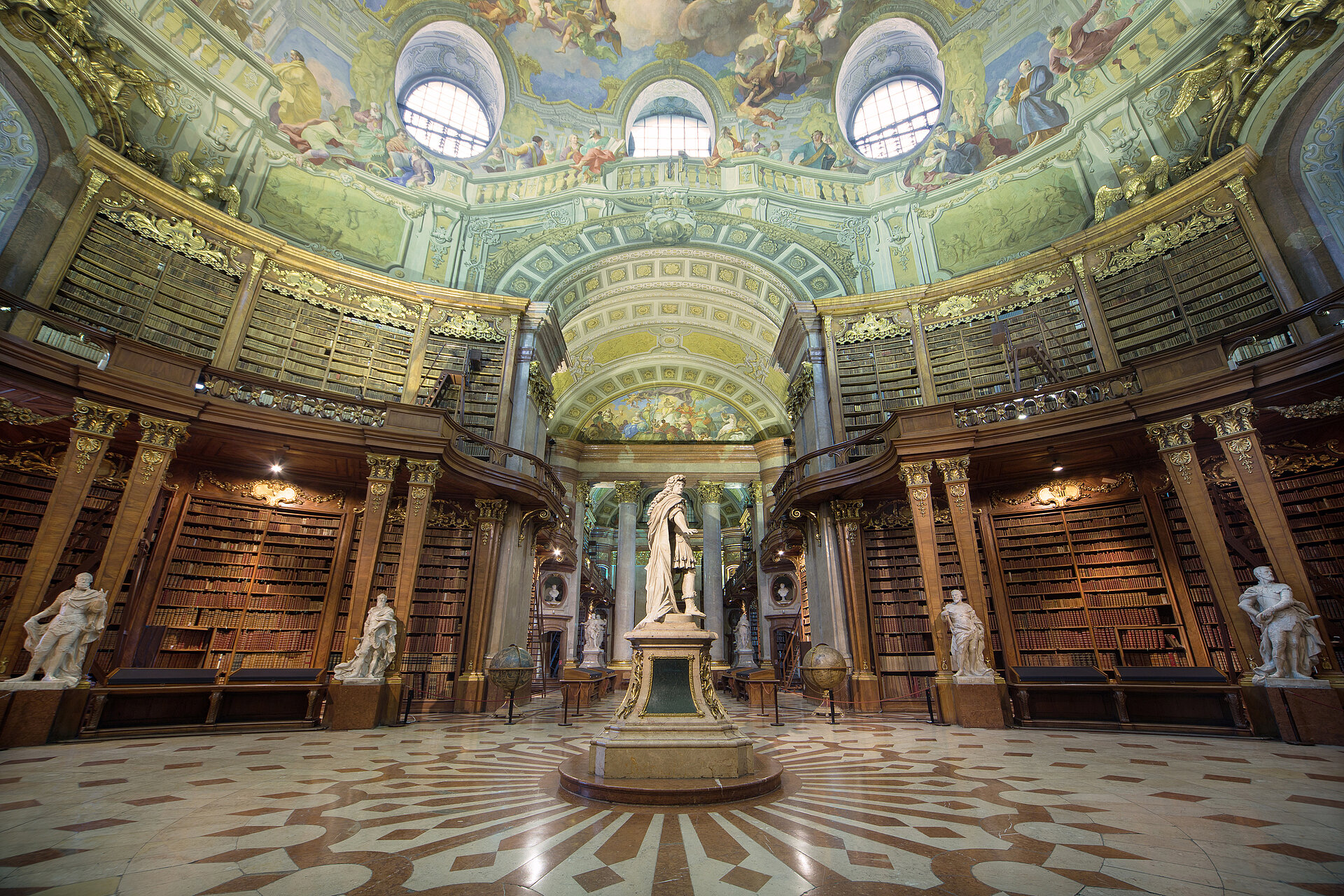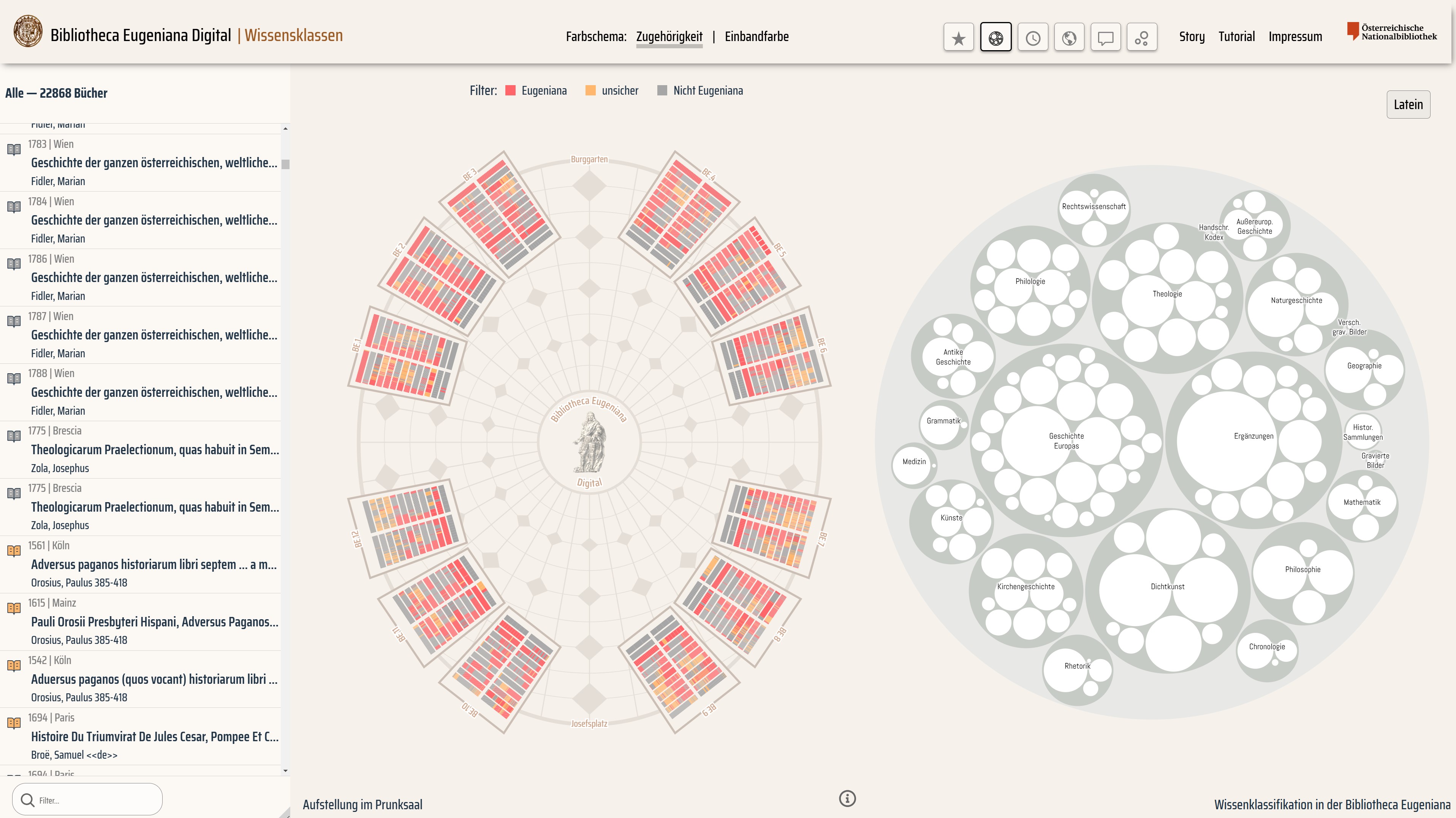Prince Eugene was not only a masterful strategist but also a remarkable patron and art collector. His “Bibliotheca Eugeniana”, one of the most impressive collections of manuscripts and printed books from the Baroque period, had been little researched and was only partially accessible to the public. A new research project by the Austrian National Library in collaboration with the University for Continuing Education Krems has explored the historical origins and current arrangement of this valuable collection, which is part of Austria's UNESCO cultural heritage, and made it visible through digital methods. The result is a virtual exhibition that combines Baroque splendor with innovation.
While Prince Eugene of Savoy's military successes in Austria were widely praised, it is less known today that he was a proven art lover who invested large sums of money in collecting the best manuscripts and books of his time. When his estate was put up for sale after the prince's death in 1738, his Belvedere Palace was valued at 100,000 guilders and his private book collection – the so-called “Bibliotheca Eugeniana” – at 150,000 guilders. The approximately 16,000 books and manuscripts in this library were purchased by Emperor Charles VI to be incorporated into the then Court Library and are now housed in the Austrian National Library. Due to its size and its eventful history, which was characterized by many relocations and rearrangements, its exact size in the various collections of the Austrian National Library and its content structure have not yet been definitively determined. The “Bibliotheca Eugeniana Digital” research project therefore aimed to create a precise overview of Prince Eugene's books within the Austrian National Library and make them digitally accessible to researchers and the public. Most of the books in the “Bibliotheca Eugeniana” are on display in the State Hall.
Historical Sources Visualized with Modern Methods
For this project, a historical manuscript catalog from the 18th century, distinctive leather bindings embossed with Prince Eugene's coat of arms, and the digitized full texts of the Austrian National Library’s historical collections were used as primary sources. Using digital humanities techniques – including machine learning, advanced search algorithms, and cutting-edge visualization methods –the project identified the books of the “Bibliotheca Eugeniana” in the digital collection, created a digital edition of the extensive historical catalog, and developed a visualization of the entire collection. This visual information portal allows users to explore the “Bibliotheca Eugeniana”, including complete digital scans and metadata such as the origin and date of the prints, providing insights into European Baroque knowledge and a better understanding of Prince Eugene's collecting interests.
Using digital methods, the project has now made this unique collection digitally accessible to researchers and the interested public.
The research project “Bibliotheca Eugeniana Digital” is a cooperation between the Austrian National Library (responsible for the database and the machine learning application) and the Centre for Cultures and Technologies of Collecting at the University for Continuing Education Krems (responsible for the conception and development of the visualizations) and was funded by the Austrian Academy of Sciences as part of the “go!digital 3.0” call.
Contact
Tags


